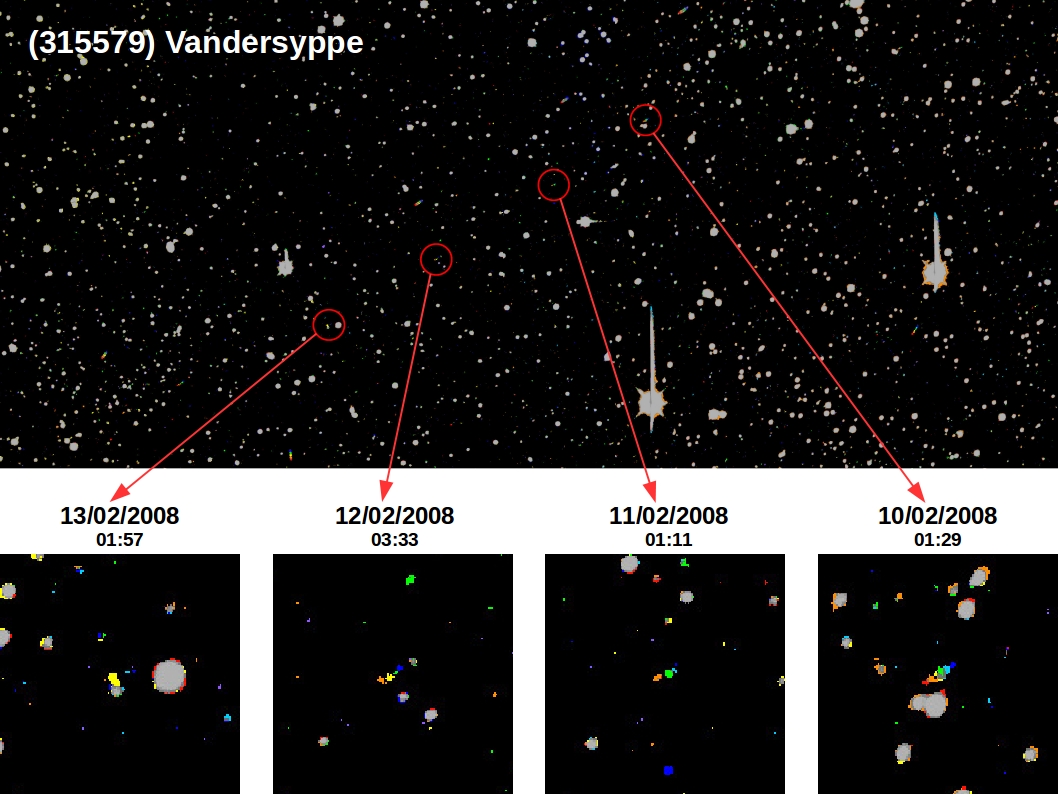 Many readers will remember our dear colleague, Anne Vandersyppe, who passed away on July 31, 2019 after a long illness. She gave many visitors and new colleagues a warm welcome upon their arrival at the Royal Observatory of Belgium. As an experienced organizer, she was also one of the driving forces behind the many conferences and workshops organised by ROB. She was a pillar of strength, comfort and good advice to all her colleagues. And we have not forgotten her.
Many readers will remember our dear colleague, Anne Vandersyppe, who passed away on July 31, 2019 after a long illness. She gave many visitors and new colleagues a warm welcome upon their arrival at the Royal Observatory of Belgium. As an experienced organizer, she was also one of the driving forces behind the many conferences and workshops organised by ROB. She was a pillar of strength, comfort and good advice to all her colleagues. And we have not forgotten her.
In November 2021, Peter De Cat proposed to dedicate asteroid (315579), which he discovered, to Anne. For many years, Peter had organised a flower sale at the Observatory in support of cancer patients with the added incentive that the person that sold the most flowers could submit a proposal to name an asteroid. In 2014, Anne won this contest and with the help of Peter she submitted a proposal to name the asteroid Vandersyppe, in honour of her family, and especially her father who died at a young age. Unfortunately, this proposal was never accepted.
Recently, a new opportunity arose to name asteroid (315579) and Peter now decided to propose to name it after Anne herself. This proposal (see image below) was accepted within a month.

Underneath is a compilation of images of the first four nights (315579) Vandersyppe was observed from Uccle. These observations were performed by Peter De Cat and Thierry Pauwels with ROB's Schmidt telescope. The asteroid is moving from right to left in the top panel. In single images, an asteroid in not easily distinguished from stars, both are point sources. Only the asteroid’s movement in the sky reveals its true nature. That is why for asteroid detections several images are taken shortly after each other, and are then overlapped and color coded to make the asteroid’s movement easily visible. Typically, the asteroid is designated with rainbow colours (moving from blue to red). The close-up images for each night in the bottom panels are a compilation of typically 5 short exposures, centred around the time indicated on the image. Each exposure corresponds to a color (blue to red), and objects (stars) that occur at the same place in multiple exposures are shown as grey circles.

The Royal Observatory of Belgium has a rich history in astrometry, the scientific discipline that is concerned with measuring the position and motion of celestial objects. In particular, there is much experience with astrometry of asteroids and comets. A popular article describing the observations performed with the Schmidt telescope over the last 20 years will soon appear in Science Connection, the magazine of the Belgian Science Policy Office (http://www.belspo.be/belspo/organisation/publ_science_nl.stm )





